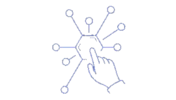Imminent project failure Averted! Sometimes even the best projects can suffer a devastating blow that leaves the team and stakeholders reeling. Such was a project that I worked on a few years back. It was a two-year development project that started off the back of the previous eighteen months of
Author: themulewhisperer
with great power… One of the biggest dangers when implementing an API network is the risk of chained API calls. Let me say, up-front, that I believe in MuleSoft’s API-Led Connectivity approach and have implemented it successfully on many different projects. This article is not a criticism of the approach
Many companies have embarked on a Digital Transformation strategy in recent years. Most business leaders would agree that the only way to survive in the new, digital, world is to embrace it. Unfortunately many of these initiatives either fail outright or, at the very least, fail to deliver the anticipated
I am reminded of the classic Intel advert — our rock stars aren’t like your rock stars. The same can often be said for Integration; our solutions aren’t like your solutions. The integration paradigm is just different. When implementing these solutions, we cannot approach them the same way as we
Can we do it? Yes we can! Last month we shared an interesting use-case in which the Mule Whisperer rose to the challenge. Having delivered, the users came back with a new use-case. This one had an interesting twist. We need to create a report using data from two different
Can we do it? Yes we can! On a recent project, the client posed an interesting challenge. Requirements as follows: We want a Process API that can fetch data from multiple systems Data will come from different sources; Relational Databases (Oracle, MSSQL & MySQL), CSV Files, and external APIs The
One simple, but quite under-used ‘pattern’, for want of a better word, is Asynchronous processing. This solves the Chained API Pitfall, along with a myriad of other challenges developers might encounter on a daily basis. Let’s take a simple scenario. An operations system captures customer order information on the company
There is not much to tell when it comes to creating a zip archive. Truth be told, this vendor documentation should get you over the line. Still, there are a few twists in the tale when it comes to implementing real-world use cases. At the time of writing, these were
Gartner’s Technology Hype Cycle is well-understood. When adopting any new technology, technical teams tend to go through the following phases: The Technology Trigger The Peak of Inflated Expectations The Trough of Disillusionment The Slope of Enlightenment and, finally The Plateau of Productivity Most of the time, this cycle is unavoidable.
I will say this at the outset; I believe in MuleSoft certification and I believe that any company hiring MuleSoft developers should expect them to be certified. I am certified and will continue to renew my certification regularly as long as I work in this space. That said… MuleSoft certification
